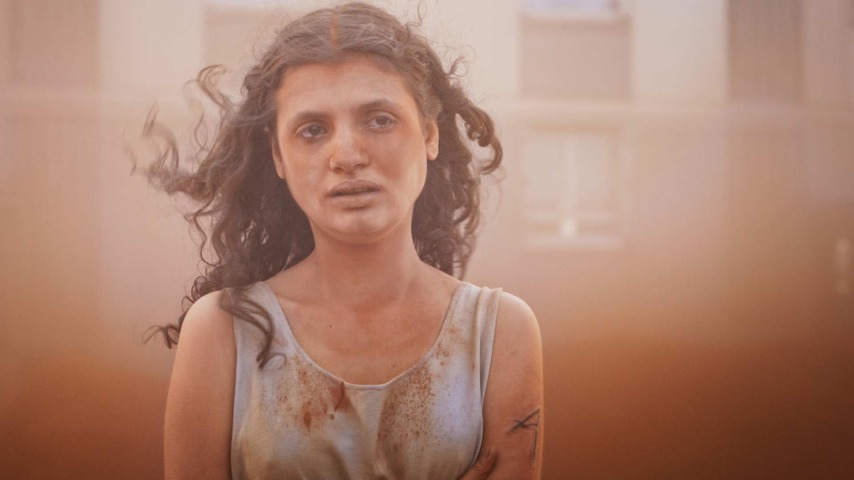Julia Ducournau drops the body horror and just tortures a metaphor in Alpha
The filmmaker won the Palme d'Or with her transgressive body horror Titane, but this AIDS allegory is inexplicably shallow.
Photo: Neon
From The Substance to The Ugly Stepsister, body horror has been a rich playground of cinematic possibilities lately, slicing and dicing our secret fleshly fears. Few budding auteurs have carved their own space in this meaty subgenre as uniquely as French writer-director Julia Ducournau—first, with Raw (2016), then her Palme d’Or-winning Titane, two stunning movies about mutation, transformation, and coming to terms with one’s self inside and out. Throughout her deeply punishing and existential Alpha, it’s understandable to search for signs of a similar trajectory in the film’s eponymous lead (stunning newcomer Mélissa Boros).
In some non-descript time (likely sometime in the ’90s), an unknown disease lurks—one that Alpha might have just been infected with after getting drunk at a party and accepting a tattoo on her arm from a stranger: a big letter A. Her medical professional mom Maman (Golshifteh Farahani) justifiably freaks out after seeing her daughter’s swollen and infected arm, loudly suspecting that it was probably a dirty needle. Meanwhile, we worry less about the needle’s state and origins (the infected arm makes it abundantly clear that it’s not good news) and instead ask ourselves what Alpha’s transformation after catching the virus will come to symbolize for the young girl: Something to do with her shifting identity as she heads further into teenhood? Shades of her evolving sexuality or gender expression? Crack the metaphor, and you crack the way to engage with the rest of the movie, one might think.

 Keep scrolling for more great stories from A.V. Club.
Keep scrolling for more great stories from A.V. Club.